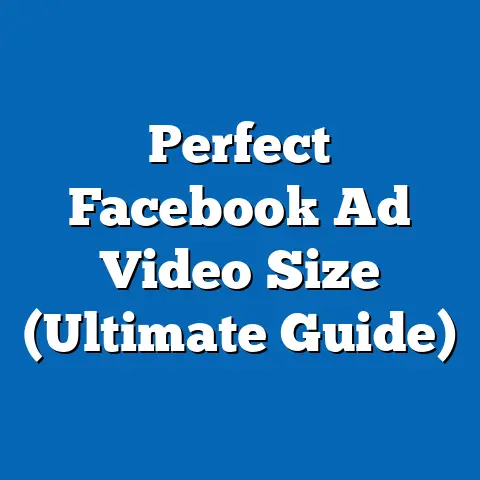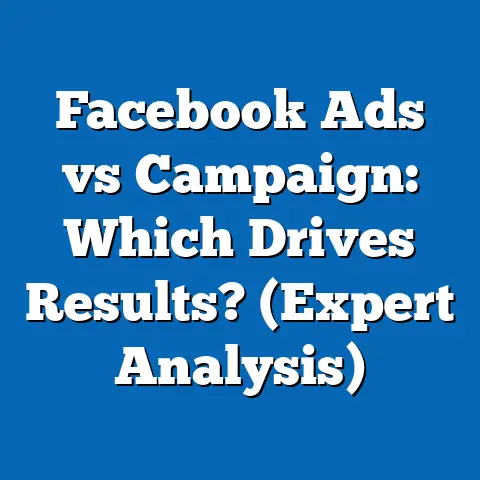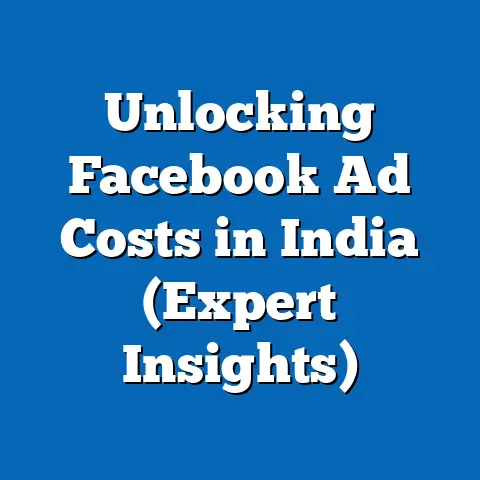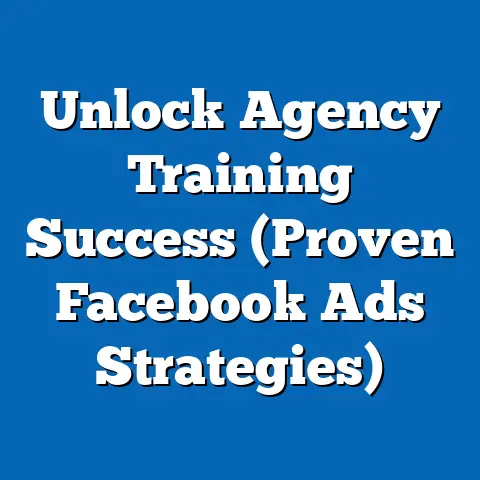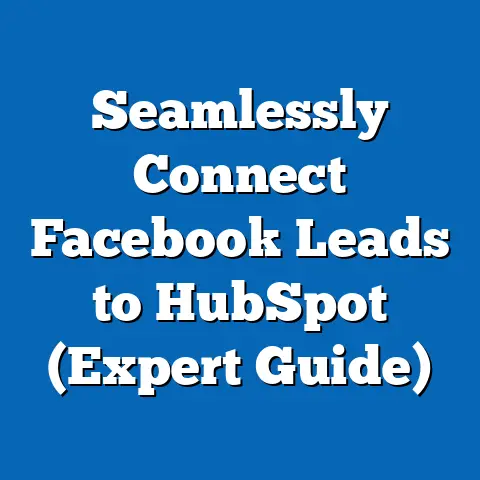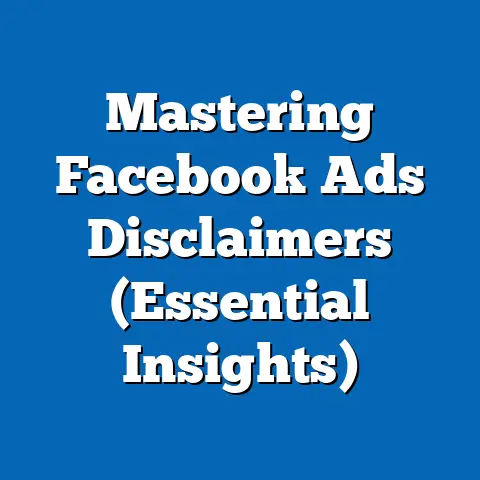Boost Conversions with Downloadable Facebook Ads (Expert Guide)
Understanding the Power of Downloadable Content
What exactly is downloadable content? Think of it as a digital gift you offer to your audience in exchange for their attention and, often, their contact information. Common examples include:
- eBooks: In-depth guides on a specific topic.
- Whitepapers: Authoritative reports that address a problem and offer solutions.
- Checklists: Step-by-step guides to help users accomplish a task.
- Templates: Ready-to-use documents like social media calendars, budget spreadsheets, or website wireframes.
- Case Studies: Demonstrations of how your product or service has helped others.
- Cheat Sheets: Quick reference guides that condense complex information.
- Webinars: Live or pre-recorded educational presentations.
- Free Trials: Limited-time access to a software or service.
So, why is this approach so effective on Facebook? It boils down to a few key reasons:
- Providing Value: In the noisy world of Facebook ads, offering something of genuine value immediately sets you apart. People are more likely to engage with an ad that promises a helpful resource than one that simply screams “Buy Now!”
- Building Trust: By giving away valuable content for free, you demonstrate your expertise and build trust with your audience. This trust is crucial for converting leads into paying customers.
- Generating Leads: Downloadable content acts as a “lead magnet,” incentivizing users to share their contact information (usually their email address) in exchange for the resource. This allows you to build your email list and nurture leads over time.
- Segmenting Your Audience: The type of downloadable content a user downloads can tell you a lot about their interests and needs. This information allows you to segment your audience and tailor your marketing messages accordingly.
Let me share a personal experience. I once ran a Facebook ad campaign for a client who offered financial planning services. Initially, our ads focused on direct sales, promoting their services with generic messaging. The results were underwhelming. Then, we decided to create a downloadable eBook titled “5 Common Retirement Planning Mistakes and How to Avoid Them.” We redesigned our ads to promote the eBook, and the results were dramatic. Our lead generation costs plummeted, and the quality of leads improved significantly. Why? Because the eBook attracted people who were genuinely interested in retirement planning, making them much more likely to become paying clients.
Takeaway: Downloadable content is a powerful tool for attracting leads, building trust, and boosting conversions on Facebook. By offering valuable resources in exchange for contact information, you can create a win-win situation for both you and your audience.
Crafting the Perfect Downloadable Offer
- Identify Your Audience’s Pain Points: What are the biggest challenges your target audience faces? What keeps them up at night? You can uncover these pain points through market research, surveys, customer interviews, and even by simply paying attention to the questions people ask in online forums and social media groups.
- Choose the Right Format: Once you understand your audience’s needs, choose a format that best addresses those needs. An eBook might be ideal for providing in-depth information, while a checklist might be better for helping users accomplish a specific task.
- Create High-Quality Content: This is where the magic happens. Your downloadable content should be well-researched, informative, and actionable. Avoid fluff and focus on providing practical tips and strategies that your audience can use immediately.
- Make it Visually Appealing: Don’t underestimate the power of visual design. A well-designed downloadable offer is more likely to be read and shared. Use a professional-looking template, incorporate relevant images and graphics, and ensure that the content is easy to read and navigate.
- Brand Your Content: Your downloadable content should reflect your brand’s identity. Use your brand colors, fonts, and logo to create a cohesive look and feel. This will help build brand recognition and trust.
- Include a Call to Action: Don’t forget to include a clear call to action within your downloadable content. This could be an invitation to visit your website, sign up for your email list, or schedule a consultation.
Here’s another example from my experience. I worked with a local bakery that wanted to attract more customers. Instead of running generic ads promoting their cakes and pastries, we created a downloadable recipe book featuring their most popular desserts. The recipe book was beautifully designed and included stunning photos of the bakery’s creations. To promote the recipe book, we ran Facebook ads targeting local foodies and baking enthusiasts. The campaign was a huge success, driving a significant increase in website traffic and in-store sales. The key was providing something of genuine value to the target audience – a collection of delicious recipes that they could use at home.
Takeaway: Crafting the perfect downloadable offer requires understanding your audience’s needs, choosing the right format, creating high-quality content, and making it visually appealing. By providing something of genuine value, you can attract leads, build trust, and drive conversions.
Designing High-Converting Facebook Ads
Now that you have a killer downloadable offer, it’s time to design Facebook ads that will entice people to download it. Here are the key elements of a successful Facebook ad:
- Compelling Ad Copy: Your ad copy should be clear, concise, and attention-grabbing. Highlight the benefits of downloading your offer and use strong action verbs to encourage clicks.
- Eye-Catching Imagery: Use high-quality images or videos that are relevant to your downloadable offer. Avoid generic stock photos and opt for visuals that are authentic and engaging.
- Clear Call to Action: Use a clear and compelling call to action button, such as “Download Now,” “Get Your Free eBook,” or “Learn More.”
- Targeted Audience: Use Facebook’s audience segmentation tools to reach the right demographic. Target people based on their interests, demographics, behaviors, and connections.
- A/B Testing: Test different ad variations to find the most effective combination of copy, imagery, and targeting.
Let’s break down each of these elements in more detail:
- Ad Copy: Think about the pain points you identified earlier. Address those directly in your ad copy. Use language that resonates with your target audience and highlights the value of your downloadable offer. For example, instead of saying “Download our eBook,” try something like “Struggling with [pain point]? Get our free eBook and discover [solution]!”
- Imagery: Visuals are crucial for capturing attention on Facebook. Use images or videos that are visually appealing and relevant to your offer. If you’re promoting an eBook, consider using a mock-up of the book cover. If you’re promoting a checklist, consider using a screenshot of the checklist.
- Call to Action: The call to action is the final push that encourages users to click on your ad. Use clear and concise language that tells users exactly what to do. “Download Now” is a classic choice, but you can also experiment with other options like “Get Your Free Guide” or “Learn More.”
- Audience Targeting: Facebook’s audience targeting capabilities are incredibly powerful. Take advantage of them to reach the right people with your ads. You can target people based on their interests, demographics, behaviors, and connections. For example, if you’re promoting a marketing eBook, you could target people who are interested in digital marketing, social media marketing, or content marketing.
- A/B Testing: Don’t assume that your first ad will be a home run. A/B testing is essential for optimizing your ads and improving your results. Test different variations of your ad copy, imagery, and targeting to see what works best.
I remember working with a SaaS company that offered project management software. Their initial Facebook ads were generic and didn’t resonate with their target audience. We decided to create a downloadable template for project managers. The template was a simple spreadsheet that helped project managers track their tasks, deadlines, and budgets. To promote the template, we created a series of Facebook ads that highlighted the time-saving benefits of using the template. We used a visually appealing image of the spreadsheet and a call to action that said “Download Your Free Project Management Template.” We also A/B tested different ad variations to see which ones performed best. The campaign was a huge success, driving a significant increase in leads and trial sign-ups.
Takeaway: Designing high-converting Facebook ads requires compelling ad copy, eye-catching imagery, a clear call to action, targeted audience segmentation, and A/B testing. By optimizing these elements, you can significantly improve your ad performance and drive more downloads.
Measuring Success and Optimizing Campaigns
Once your Facebook ad campaigns are up and running, it’s crucial to track your results and optimize your campaigns for maximum performance. Here are the key metrics you should be tracking:
- Click-Through Rate (CTR): This measures the percentage of people who see your ad and click on it. A high CTR indicates that your ad copy and imagery are resonating with your audience.
- Conversion Rate: This measures the percentage of people who click on your ad and download your offer. A high conversion rate indicates that your landing page is effective and your offer is compelling.
- Cost Per Lead (CPL): This measures the average cost of acquiring a lead through your Facebook ad campaign. A low CPL indicates that your campaign is efficient and cost-effective.
- Return on Ad Spend (ROAS): This measures the revenue generated for every dollar spent on Facebook advertising. A high ROAS indicates that your campaign is profitable.
You can track these metrics using Facebook Ads Manager and Google Analytics. Facebook Ads Manager provides detailed data on your ad performance, including impressions, clicks, conversions, and cost per lead. Google Analytics provides insights into user behavior on your website, including traffic sources, page views, and conversion rates.
Here’s how to use these metrics to optimize your campaigns:
- Low CTR: If your CTR is low, try experimenting with different ad copy and imagery. Make sure your ad is visually appealing and that your copy is clear, concise, and attention-grabbing.
- Low Conversion Rate: If your conversion rate is low, try optimizing your landing page. Make sure your landing page is easy to navigate and that your offer is clearly presented.
- High CPL: If your CPL is high, try refining your audience targeting. Make sure you’re targeting the right people with your ads.
- Low ROAS: If your ROAS is low, try adjusting your bidding strategy. Make sure you’re bidding competitively and that you’re targeting the right keywords.
Continuous testing and iteration are essential for improving your results over time. Don’t be afraid to experiment with different ad variations, targeting options, and bidding strategies. The more you test, the more you’ll learn about what works best for your audience.
I once worked with an e-commerce company that was struggling to generate sales through Facebook ads. Their initial campaigns were poorly targeted and didn’t resonate with their audience. We decided to create a downloadable style guide featuring their latest products. The style guide was beautifully designed and included tips on how to style the products for different occasions. To promote the style guide, we ran Facebook ads targeting fashion enthusiasts and style bloggers. We tracked our results closely and optimized our campaigns based on the data. We experimented with different ad variations, targeting options, and bidding strategies. Over time, we were able to significantly improve our CTR, conversion rate, and ROAS. The campaign became a major driver of sales for the e-commerce company.
Takeaway: Measuring success and optimizing campaigns is crucial for maximizing your ROI on Facebook advertising. By tracking key metrics, analyzing your data, and continuously testing and iterating, you can significantly improve your results over time.
Conclusion
Using downloadable content in your Facebook ads is a powerful strategy for boosting conversions. By offering valuable resources in exchange for contact information, you can attract leads, build trust, and drive sales. Remember to identify your audience’s pain points, create high-quality content, design compelling ads, and track your results closely. Persistence and experimentation are key to mastering the art of Facebook advertising. So, go ahead and transform your Facebook ads from a cost center into a conversion machine! You’ve got the tools and the knowledge – now it’s time to put them into action. I’m confident that with a little effort and a lot of testing, you can achieve remarkable results. Good luck!

